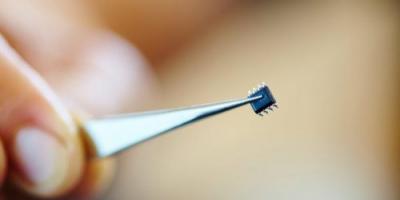Irga reminds me of purple apples. Why do gardeners love to grow it? The plant is characterized by increased winter hardiness, early fruiting, and abundant and annual harvest. And its charming fruits are a source of valuable vitamins.
By the way, serviceberry berries can rightfully be called apples, since the plant belongs to the Apple subfamily.
Appearance: spreading shrub or medium-sized tree
Family: Pink
Leaves: round, sometimes oval, with serrated edges, deep green on the outside, lighter on the inside.
Flowers: Irga blooms with densely arranged white or cream flowers.
Fruits: Dark blue or violet-red, with a grayish coating. Weight - 0.5 - 0.8 g. The taste is pleasantly sweet.
Irga is very beautiful and also useful. She decorates the garden for 3 seasons. In the spring she dresses up in white fragrant flowers, in the summer she flaunts earrings - clusters of dark blue fruits, and in the autumn she puts on a luxurious crimson sundress.
Irga is not picky about the composition of the soil, nor is it picky about growing conditions. During the flowering period it is an excellent honey plant.

In conditions middle zone In Russia, Irga Canadiana (an average tree from 2 to 6 meters) and common shrub (a compact spreading bush 0.5 to 4 meters) are usually grown.
 |
 |
Common Canadian
The plant begins to bear full fruit with purple apples at 5-7 years of age. The irga lives quietly until the age of 70. And the average yield from one bush is 9 - 14 kg.
Irga easily overwinters; there is no need to cover it even in particularly cold and little snowy winters; it can withstand temperatures of -40 or more. It will never leave you without a harvest, even if there are long spring frosts - it easily and without any problems overcomes all the hardships of life.
It can be safely planted in windy places - it will grow a reliable wall for other fruit and berry plantings.
Irga cultivation: pruning, feeding
Irga is trimmed into a bush, weak shoots are cut out. For the first time, the plant is almost left untouched for 2-3 years, only the bad ones are removed. The finished bush should consist of 10 - 15 branches of various returns.
Further care consists of cutting off only weak and unnecessary shoots (shoots), as well as damaged or broken ones.
Every year in early spring Before the buds open, I do rejuvenating pruning of the tips of the branches to stimulate productivity. I completely remove the extra ones (more than 15). I check the reproductive branches - they should be no older than 5 years. I cut off the “old ones” to the very base, and in return leave a young shoot.
Top dressing
Watch your irga. If you notice that in the first season after planting it does not develop quickly enough, the rate of development is weak, then in May or June it is worth feeding the plant. To do this, you can add nitrogen fertilizer (20 - 30 g per 1 square meter), mullein tincture (1:6) or chicken manure (diluted with water 1:12).
When the plant begins to bear fruit (usually in 4-5 years), it is advisable to feed it with rotted manure (3-4 kg per square meter) at intervals of every two years.

Features of harvesting
The ripening of serviceberry fruits does not occur simultaneously. The first ones ripen at the beginning of July, and the last ones at the end of August. It is not uncommon to find multi-colored apples in one brush: blue, green, red.
So that you don’t have to figure out how to deal with voracious birds, but the simplest and most effective way protecting the crop from them is (birds oh how they love to eat) - using a fine mesh or spandond, you can use ordinary gauze (only good density and several layers) to wrap the bushes. Believe me, if you don’t do this, you won’t see a harvest - everything will be eaten in a few hours.

Serviceberry berries are eaten fresh, or made into compote or jam; they can be frozen or dried for the winter. Such dried apples are often referred to as northern raisins. It is often used as an additive for pastries, pies, and rolls. An excellent ingredient for jelly made from dried fruit.
It is recommended to mix the juice from it with sour juices, such as apple, cherry, plum, or add lemons to taste.
Growing irgi: bush propagation
I usually propagate by cuttings, which I take from the root shoots. I plant 4 good root shoots in one common hole in early spring (deadline: 2nd ten days of April). It is advisable to fertilize the hole with organic matter and wood ash. The result is 1 strong bush with 4 trunks.
During planting, serviceberry seedlings are buried in the ground 5 - 7 cm deeper than they grew before. The seedling should be trimmed immediately, leaving 4 - 5 buds.
propagation by seeds:
Fresh seeds germinate well. In the summer, July or August, I sow the seeds of the serviceberry to a depth of 1 - 2 cm. Over the course of several years, the seedlings grow and develop. The first fruiting begins after 2 seasons on the third, but it is abundant only in 4, or even 5.
Irga quickly produces shoots, so every year you need to cut out all the extra shoots that can be used for cuttings. There should always be 10 - 15 trunks in a bush. I control the height at 2 - 2.5 meters.

Beneficial features
- Serviceberry berries are good to eat during increased mental stress, fatigue, and insomnia.
- The fruits are rich in vitamin P. Juice from purple apples helps normalize the cardiovascular system, in particular strengthening the walls of blood vessels, which reduces the risk of developing a heart attack and varicose veins.
- A large amount of vitamin A is present in serviceberry berries. Thanks to it, vision returns, this is a good prevention of cataracts.
- Promotes the healing of wounds and ulcers on the skin. To do this, washed leaves are crushed until juice is formed and applied to the affected areas.
New varieties
There are Canadian and American varieties of this plant, related to the species Irga alnifolia.
So, for example, the Forestburg variety has VERY large fruits, and the Altaglow variety has white and sweet fruits.
These plants are not pollinated by their own pollen. You need to grow 2 - 3 varieties on the site so that they are pollinated by bees.
But, I prefer the proven, responsive, dear common shadberry. All fancy varieties are hybrids.
Irga, medlar, currant, amelanchier, honey apple - there are many different names for a shrub plant from the Rosaceae family. It is common in Europe, America, Asia, Japan and the Caucasus. It grows wild, and cultivated varieties have been bred. The plant is valued for its unpretentiousness, abundant flowering, the vibrant seasonal color of the leaves and the sweetness of the small blue fruits. Outwardly, they resemble large currants, but in fact they are tiny apples.
The beneficial properties of serviceberry have been known for a long time - the leaves, bark, inflorescences and fruits of the plant are used. It became widespread in Europe in the 16th century – delicious sweet wine was made from the berries.
The plant is loved in America, where entire plantations are grown for this purpose. The berries are good fresh; they are used to make jams, preserves, and fillings for baked goods.When dried they retain beneficial features, and taste like raisins.
Composition and calorie content
Serviceberry berry is a source of bioactive compounds. They contain 29 polyphenolic compounds: anthocyanins, phenolic acids, flavonols, triterpenoids, carotenoids, catechins, chlorophyll and tocopherol.
Also found in irga are trace elements: manganese, copper, iodine, lead and cobalt.Irga is a low-calorie product - 100 g. contains 45 kcal, so the berry is used in diets for weight loss. It accelerates lipid metabolism, which affects weight loss.
The benefits of shadberry are determined by the content of antioxidant and anti-inflammatory compounds. Their protective properties, as well as the vitamins and minerals in their composition, reduce the risk of developing chronic diseases.
For muscles
Ursolic acid in the composition of shadberry resists the development of muscle atrophy caused by aging of the body and various diseases.
For the heart and blood vessels
Vitamin P cleanses blood vessels from cholesterol, reduces blood pressure and normalizes the functioning of the heart and blood vessels.
For metabolism and diabetics
A decrease in blood glucose concentration was noted after taking shadberry. The berry is recommended for diabetics.
For skin
Irga is an excellent product for the skin, which is used in cosmetology to give smoothness and softness.
For immunity
In America and Europe, wine made from serviceberry, confitures and jams are available for sale. Choose products in undamaged packaging and carefully monitor the expiration date.
Everyone's favorite summer is coming to an end, and every self-respecting housewife begins to think about Of course, you can't do without jam. It is not only tasty, but also very healthy and can help with colds.
Raspberry and currant jams are considered the healthiest. Unfortunately, yurga has been forgotten - a berry with no less useful qualities. You can meet her at summer cottages and in the forest, because she is very unpretentious. This plant can live more than 40 years, and begins to bear fruit as early as three. It grows quite tall, up to 4 meters. Yurga is a berry very similar to It has many healing nutrients, vitamins (B, C, P), trace elements (copper, lead). And also it contains a large number of carotene, which is considered one of the powerful antioxidants. These substances help a person fight diseases and improve immunity. A decoction of the bark of this plant is used to heal various wounds, burns, to disinfect the oral cavity, and for sore throats. Yurga is a berry that has a calming effect, so it is better not to consume it in the morning, especially for those who drive a car. It also helps lower blood pressure, so hypotensive people should not get carried away with its fruits.

Jam recipe
This plant mainly bears fruit closer to autumn, so jam from yurga berries should be prepared at this time, so that in winter you can enjoy it at any time. To prepare it, you need to take: 1 kg of yurga, 200 g of sugar, 250 ml of water and 1 g citric acid. The berries must be carefully sorted, all stalks removed, rinsed with water and left to drain on a clean, dry towel. Next, you should cook the syrup: mix water with sugar in a saucepan and put on fire so that only one side of the pan is heated. Foam will collect on the other side and must be removed. As soon as the foam stops forming, you need to put the pan on high heat so that the water evaporates until you get the syrup of the thickness you need. Pour this syrup over the yurga, bring to a boil and cook for 5-6 minutes. Then it should be left for 6-7 hours. Then cook with the addition of citric acid. The cooled jam should be spread into
Other recipes

In addition to jam, there are various healthy and equally tasty treats (recipes) made from yurga berries.
- For example, fruit drink. To do this, you need to wash the fruits, squeeze the juice out of them and set it aside. At the same time, the squeezed yurga should be poured with 1 liter of boiling water and left to infuse. Then mix it with juice, add sugar. It is better to refrigerate before use.
- Compote from yurga: for the base you will need yurga itself (berry - 700 g, ripe, undamaged) and 300 g of currants. Selected and washed fruits should be placed in jars and filled with syrup, which must be prepared in proportions of 1: 2 (500 g of sugar per 1 liter of water). Place the jars in boiling water for about 5 minutes, and then roll up the lids.
- Yurga raisins: peel the berries from the stalks and dry in air or in the oven. Box or cardboard box Line the inside with paper and sprinkle with powdered sugar. Cover the top of the berries with gauze to place a small press. This product is very convenient to use in making muffins or pies.
- Yurga kvass: crush 1 kg of ripe berries and add 10 liters of water. Bring to a boil and cool. Strain the resulting broth and add 2 cups of honey and 25 g of yeast. Let it brew for 10-11 hours and pour into a bowl. Should be stored refrigerated.
Irga ( Amelanchier) family Rosaceae ( Rosaceae)
Description of irgi:
Irga is a deciduous shrub or small tree, there are twenty species. This shrub grows in the temperate climate of the northern hemisphere and is distributed wild in North America, in some areas of Europe, in a small part of North Africa and Asia Minor, Eastern China, the Korean Peninsula and the Japanese Islands. In our country, serviceberry grows in the Crimea and the Caucasus. Irga is very unpretentious plant capable of withstanding frosts down to minus 45 degrees, during flowering up to 5 minutes. It can grow on any soil, except swampy with low standing groundwater. The main condition for yield is the presence of sun, then the berries ripen large, juicy and tasty. In the wild, it can be found in thickets of small bushes, in sparse forests, on forest edges, and in the mountains at an altitude of up to two kilometers above sea level. On the territory of Russia, the round-leaved serviceberry (A. rotundifolia) and the Canadian game (A. canadensis) are widespread; they are grown as a cultivated fruit (yield per bush is 8 - 15 kilograms, fruiting is extended over time, so the fruits are collected in several stages or at a time, ripe the fruits do not fall off), a melliferous plant (blooms early and abundantly in spring) and an ornamental plant.
Reproduction of irgi:
Irgu is propagated by seeds, grown from cuttings, root shoots and dividing the bush. Serviceberry bushes grow very strongly, due to root suckers. It is better to propagate irgu one way - two-year-old seedlings, in spring or autumn, when planting, they are buried to a depth of 8 - 10 centimeters for better rooting. The distance between seedlings depends on what you will use this shrub for. If this hedge- distance from 0.5 - 1.5 meters. If serviceberry is grown as fruit bush- distance 3-4 meters. A hole for planting a bush is dug with a depth of 40 centimeters and a diameter of 70 - 80 centimeters. After planting, the plant is watered - about a ten-liter bucket of water per plant, then mulched with earth or peat. The above-ground part is cut to a distance of 15 centimeters from the ground for better regrowth of side shoots.

Properties of serviceberry:
The fruits, bark and leaves of the serviceberry have many positive properties because of this serviceberry is used in folk medicine, therapeutic and dietary nutrition, winemaking and cooking.
Irga is superior to grapes in the amount of vitamin C, contains up to 12% sugars, malic and other organic acids, is rich in carotene, has a high content of tannins and coloring substances, flavonols, vitamins P, group B, microelements, fiber, pectins; the seeds contain fatty oil, and the bark and leaves contain tannins.
Irga in folk medicine is used as:
- A sedative that improves sleep and strengthens the body;
- Improved vision;
- Improving digestion and strengthening the stomach;
- For the prevention of cardiovascular and gastrointestinal diseases;
- To strengthen the walls of blood vessels and increase their elasticity;
- To improve heart function and lower blood pressure.
Video about shadberry, its properties and cultivation on the site:
Irga photo




During the summer-autumn period, we can all fully enjoy the gifts of nature in the form of vegetables, fruits and berries. It is this time that gives us the opportunity to saturate the body with useful vitamins and minerals, because the variety of natural products is very wide. One of the sources of vitamins and beneficial microelements is the serviceberry berry, a photo of which can be seen in the article. The product is extremely useful and has a unique bio chemical composition.
Today, the berries of this plant are widely used in cooking, as well as folk medicine. Thanks to these amazing blue fruits, it is possible not only to enrich the body useful substances, but also prevent many diseases of the blood, blood vessels, and digestive tract.
What kind of berry is this?
Let's find out right away where the serviceberry grows? Canada is considered the birthplace of the shrub with attractive blue berries, but today the plant is widespread throughout the continent of Europe, Asia and even Africa.
Many people, realizing how useful the fruits of the bush are, try to plant the plant at home and in the country.
Popularly, the berry has some other names, but most often this juicy, healthy fruit is called serviceberry berry. Its scientific name is amelanchier.

Externally, the fruits of the serviceberry are small and can have a color from pink to dark purple. The peculiarity of the plant is that the berries visually seem dirty, but in fact it is a natural protective film, allowing you to preserve fruits from wasps, hornets and other lovers of juicy berries.
What does irga look like? The bush blooms in the spring. During this period, the tree is covered with small inflorescences. Serviceberry flowers are usually red or purple shade with white coating.
Varieties of the shrub can be found throughout the world. In Europe, the dominant species are the round-leaved serviceberry and the alder-leaved serviceberry (see photo). It is this species that is resistant to cold and can survive winter frosts in this area. In America and Canada you can find such a variety as Canadian serviceberry (see photo), it is also called Lamarck serviceberry, a photo of the plant can be seen in the article. Also included among the varieties of the plant is a type of shrub such as shadberry spicata; in the photo of the plant you can see the beauty of the shrub during flowering.
Photo of serviceberry berries




Many housewives certainly want to see a bush with extremely healthy berries at home, and rightly so! The extraordinary benefits of berries make the shadberry tree a welcome guest in every garden.
Planting and care does not require special skills. The shrub propagates through seedlings, which can easily be purchased at the market or in a specialty store. The plant is planted in early spring, when the frosts have subsided and the soil has thawed. After planting, the seedlings need to be watered, but not too often. When the tree gets stronger, special care not required.
Important! When purchasing seedlings, you should pay attention to the integrity of the roots and branches. On how high quality it will be planting material, further success depends.

What are the benefits of berries
One can talk for hours about how useful the berries of this unpretentious shrub are. The unusual chemical composition of the fruit makes its berries a storehouse of vitamins and minerals. So, what are the beneficial properties of the plant?
- The amount of vitamins, minerals, flavonoids, pectins, and beneficial acids in this product is simply off the charts. In addition, berries contain a lot of keratin, which makes them simply indispensable for the beauty and health of the skin.
- Thanks to its rich composition, consuming the fruits of this shrub helps improve immunity, remove toxins, and strengthen the body as a whole.
- The presence of such a component as pectin helps cleanse the human body of heavy metals and other negative substances. Regular consumption of serviceberry berries helps to significantly reduce cholesterol levels in the blood, which is an important condition preventing heart attacks, strokes and other diseases of the cardiovascular system.
It has been proven that the components included in the fruit are excellent prevention of cancer. Nutritionists advise patients who often experience stress and nervous tension to have berries in their diet. It is also recommended to include fruits in your diet for sleep disorders and depression.
- Freshly squeezed berry juice has an antiseptic effect for various diseases of the oral cavity. Gargling with juice helps with sore throat, stomatitis, tonsillitis and other diseases.
- It is recommended to treat various skin injuries, such as abrasions, burns, frostbite, with a decoction of the plant’s fruits and fresh juice. This type of treatment helps to cope even with festering wounds.
- Berries are very useful for patients suffering from heart failure, as well as other diseases of the cardiovascular system.
- The description of the beneficial properties would not be complete without mentioning the ability of the fruit of the serviceberry to lower blood pressure and thin the blood.

It is believed that if you eat a handful of these daily healthy berries in fresh and even frozen form, you can avoid many health problems and saturate the body with useful vitamins and minerals.
Important! IN traditional treatment They use not only irgi berries, but also the leaves of this amazing useful shrub. For example, a decoction of the leaves has astringent properties, which makes it very effective for diarrhea and other disorders of the digestive system.
Use in folk medicine
For treatment various diseases berries, leaves, flowers and shrub bark are used. Further in the article we will look at several ways to prepare various medicines.
For stomach diseases
Various diseases of the gastrointestinal tract can be treated with healthy tea, which can be taken both warm and cool. To prepare, pour a tablespoon of dried berries into 500 ml. boiling water Afterwards the product needs to sit for about 30-40 minutes. This tea will help normalize digestion, increase appetite, and speed up the body's metabolism.
Recipe for diarrhea
The astringent properties of serviceberry make it possible to prepare an effective medicine for indigestion from its berries and leaves. To prepare, you need to add a glass of boiling water to a tablespoon of dried berries and the same amount of crushed plant leaves. After 15-20 minutes, strain the solution and take warm on an empty stomach 2-3 times a day.

Treatment of sore throat and gum disease
For infectious and purulent diseases of the oral cavity, it is necessary to rinse with fresh juice of serviceberry berries. You can squeeze out the juice by rubbing the fruits through a sieve. The juice can also be used to wipe festering wounds and burns.
To lower blood sugar
An infusion made from the leaves of the bush perfectly normalizes the level of sugar in human blood. For this, you can use either a fresh plant or a dry one. To prepare 2 tbsp. l. crushed leaves pour 200 ml. boiling water and leave for 2 hours. It is recommended to use the infusion in the morning and evening on an empty stomach.
A decoction of irgi bark is a panacea for many diseases.
Due to the properties of the bark and the presence of a huge amount of tannins in it, it is widely used in folk medicine for gargling, washing wounds, and also for many gastrointestinal diseases. Preparing the decoction is quite easy. To do this, crushed plant bark in the amount of 1 tbsp. l. pour half a liter of boiling water and place on low heat. After boiling, the product must be simmered on fire for another 10-15 minutes. After cooling, the product is filtered and used to treat various ailments.

Contraindications
Despite the enormous benefits for the body, the beneficial fruits of serviceberry still have some contraindications. To avoid unwanted effects and the development of allergies, you should consult a specialist before consuming the fruit. Prohibitions on introducing berries into the diet may include:
- presence of allergies;
- During pregnancy and breastfeeding;
- age up to 3 years;
- hypotension.
It is also worth noting that a large number of berries can affect concentration. They should not be eaten by people working in industries that require special attention, as well as drivers going on the road.
Everything should be in moderation. This Golden Rule also applies to the use of fruits of such useful plant like irga. Taking good care of your health and saturating it with healthy vitamins will help you stay young and healthy.








